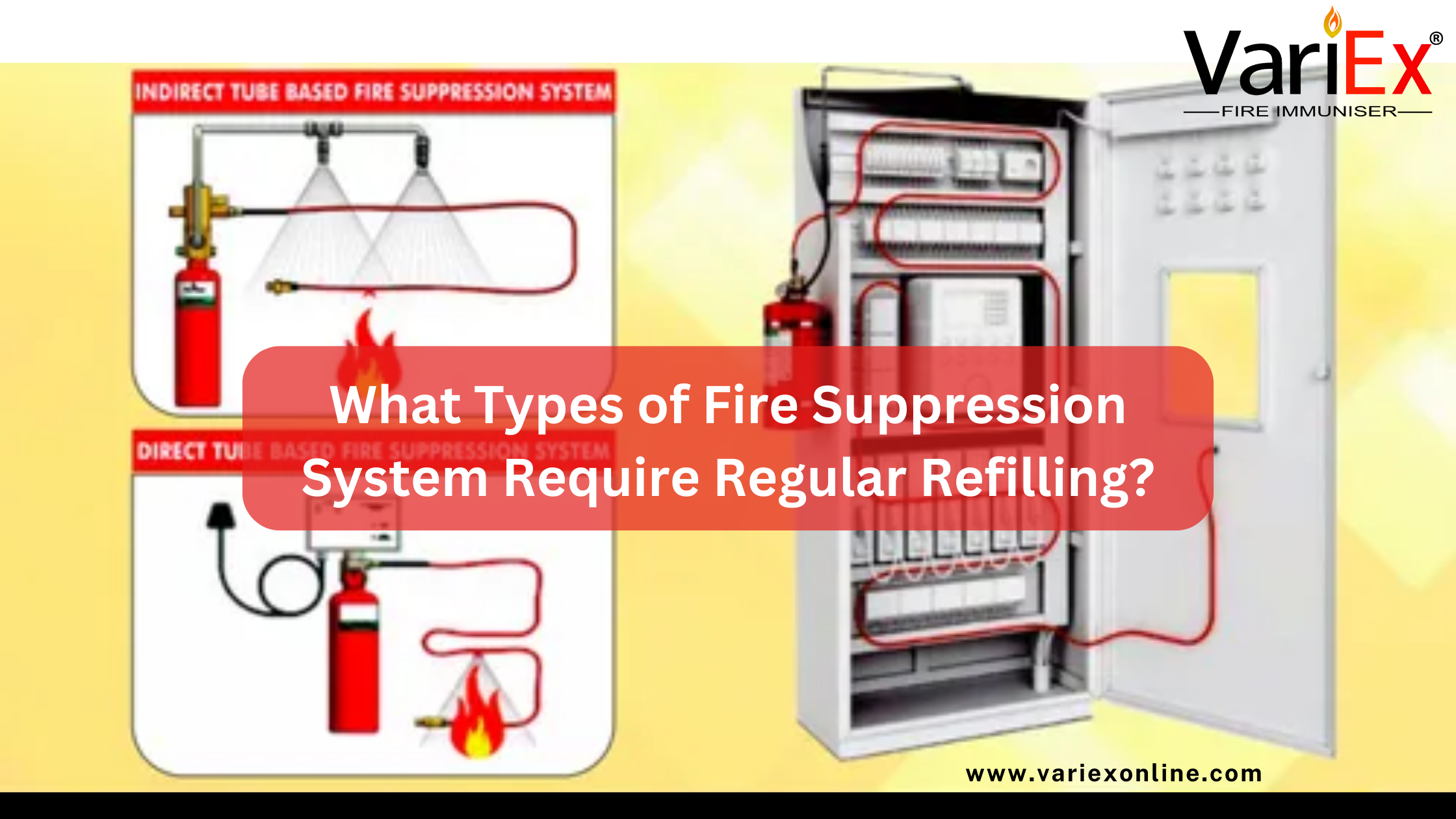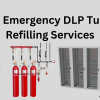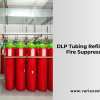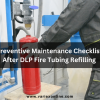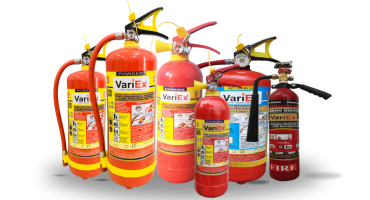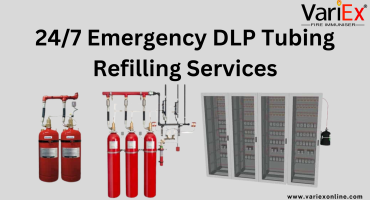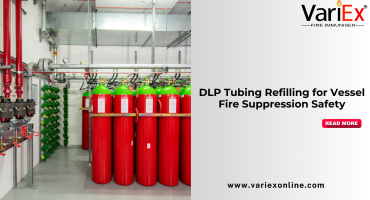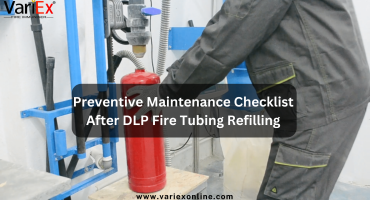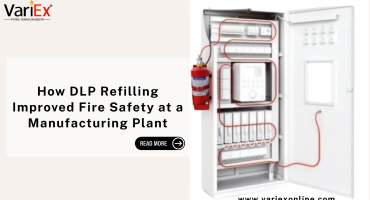![]()
Fire Immuniser
+91-7829629111
Email: info@variex.in
Varistor Technologies Pvt. Ltd.
Block-1, First Floor, Ardente Office One, Hoodi Circle, ITPL Main Road, Bengaluru, Karnataka 560048, IN
What Types of Fire Suppression System Require Regular Refilling?
What Types of Fire Suppression System Require Regular Refilling?
A fire suppression system is one of the most important safeguards in any facility—from commercial kitchens to data centers and warehouses. While installing a fire suppression system is a critical first step, maintaining and refilling the system regularly is just as essential for ensuring effective fire protection.
Many businesses operate under the false belief that their systems are “set and forget,” only to discover during an emergency that the system has lost pressure or is partially discharged. In this detailed guide, we break down what types of fire suppression systems require regular refilling, why it's mandatory, and how to stay compliant with current safety regulations.
Why Fire Suppression System Refilling Is Necessary
Fire suppression systems rely on stored agents—such as CO₂, FM-200, dry chemical powder, or foam—that need to be refilled periodically. Reasons include:
-
System discharge due to fire or false alarms
-
Slow leaks or pressure loss over time
-
Agent degradation, especially in chemical and foam-based systems
-
Compliance with NFPA and local safety codes
-
Insurance requirements and safety audits
Regular refilling ensures the system remains fully charged, functional, and ready for action in case of fire.
Table: Fire Suppression Systems and Their Refilling Requirements
| Fire Suppression System | Suppression Agent | Refill Frequency | Common Application Areas |
|---|---|---|---|
| CO₂ (Carbon Dioxide) System | Carbon Dioxide (CO₂) | After each discharge; every 5 years (if unused) | Industrial machinery, server rooms |
| FM-200 System | Heptafluoropropane (HFC-227ea) | After discharge; annual inspections | Data centers, telecom facilities |
| Wet Chemical System | Potassium Acetate/Citrate | Every 6 months or after any discharge | Commercial kitchens |
| Dry Chemical System | Monoammonium Phosphate | After activation; 6-year internal checks | Fuel stations, spray booths |
| Clean Agent System (Novec 1230) | Novec 1230 Fluid | After use; pressure checks annually | Electronics labs, archive rooms |
| Foam-Based System (AFFF) | Aqueous Film Forming Foam | After activation or every 1–3 years | Aircraft hangars, oil facilities |
1. CO₂ Fire Suppression Systems
CO₂ systems are designed to displace oxygen in an enclosed area, suffocating the fire without damaging sensitive equipment. However, since CO₂ is stored under high pressure, even undischarged systems can lose pressure over time.
Refill Requirements:
-
After any discharge (partial or full)
-
Every 5 years for hydrostatic testing
Risk of Not Refilling:
Undetected pressure drops can render the system useless during emergencies.
2. FM-200 Fire Suppression Systems
FM-200 systems use heptafluoropropane, a clean agent that suppresses fires by removing heat. This makes it ideal for protecting data centers and high-tech equipment.
Refill Requirements:
-
Refill immediately after any discharge
-
Inspect annually to ensure pressure and weight compliance
Maintenance Tip:
FM-200 cylinders must undergo hydrostatic testing every 12 years as per NFPA 2001.
3. Wet Chemical Suppression Systems
These systems are specifically designed for Class K fires, such as grease fires in kitchens. The potassium-based agent reacts with cooking oil to form a cooling foam layer that prevents re-ignition.
Refill Requirements:
-
Every 6 months (routine service)
-
Immediately after discharge
Note:
Kitchens must comply with local fire codes and NFPA 96, which mandate semi-annual inspections and service.
4. Dry Chemical Suppression Systems
Dry chemical systems use a powder like monoammonium phosphate to suppress fires in industrial settings, garages, and fueling stations. They are effective against Class A, B, and C fires.
Refill Requirements:
-
After any discharge
-
Internal inspection every 6 years
-
Hydrostatic testing every 12 years
Common Uses:
Spray paint booths, gas stations, and chemical warehouses.
5. Clean Agent Systems (Novec 1230, FE-36)
Clean agent systems like Novec 1230 are ideal for environments where water or foam would cause equipment damage. These agents are safe for electronics and human exposure.
Refill Requirements:
-
After system discharge
-
Annually check cylinder pressure
Extra Caution:
Slow leaks can be hard to detect, so install pressure monitoring sensors where possible.
6. Foam-Based Suppression Systems
Foam systems like AFFF (Aqueous Film Forming Foam) are used in high-risk environments where flammable liquids are present. They create a film barrier between the fuel and air, extinguishing the fire.
Refill Requirements:
-
After any system use
-
Every 1 to 3 years depending on the foam's shelf life
Important Note:
Foam concentrates degrade due to temperature, light, and humidity, making periodic testing and refilling essential.
What Happens If You Don’t Refill on Time?
Failing to refill your suppression system as recommended can result in:
-
Total system failure in an emergency
-
Fines or penalties for non-compliance with local fire codes
-
Voided insurance claims due to negligence
-
Business disruption and potential asset loss
-
Increased liability in case of fire-related injuries
Who Should Perform Refilling?
Refilling must be carried out by licensed fire safety professionals trained to handle specific suppression agents and systems. They will:
-
Inspect and test system integrity
-
Safely dispose of expired or discharged agents
-
Refill to the manufacturer-recommended specifications
-
Provide documentation for audits and insurance
Best Practice:
Partner with a certified fire protection company and schedule preventive maintenance annually.
Signs Your System May Need Refilling
-
The system has recently discharged (even partially)
-
Pressure gauge shows low or zero
-
Expired agent or past refill schedule
-
Audible alarms or error indicators from the suppression control panel
-
Annual inspection is overdue
Tips to Stay Refill-Compliant
-
Keep a Maintenance Logbook
Document all refill dates, inspections, and system tests. -
Set Reminders
Use fire safety software or calendar alerts to schedule timely refills. -
Conduct Internal Visual Checks
Train facility staff to recognize pressure drop or visible wear. -
Review Fire Safety Codes
Stay updated on NFPA standards, local fire service rules, and insurance requirements. -
Get Fire Safety Audits Done
Third-party fire audits can catch refill and maintenance issues early.
Conclusion
Understanding which types of fire suppression systems require regular refilling is critical to maintaining operational safety, legal compliance, and asset protection. Whether it’s a CO₂ system, a clean agent system like FM-200, or a kitchen wet chemical system, each has unique maintenance needs and refill schedules.
Neglecting to refill can cost more than just money—it can cost lives. Make it a priority to establish a proper refill and inspection routine by partnering with certified professionals and staying informed on safety regulations.
Frequently Asked Questions
Yes, systems like CO₂, FM-200, dry chemical, and wet chemical all require regular refilling after use or within specified time intervals.
Most systems should be inspected annually. Wet chemical systems require service every 6 months. Refill immediately after any discharge.
No. Refilling should always be done by licensed fire protection professionals to ensure safety and compliance.
The system will not activate in case of a fire, leading to property damage, safety risks, and potential legal issues.
Use a maintenance logbook, set up automated alerts, and contract a certified fire safety service provider for scheduled inspections.
Final Say
At VariEx.in and VariexOnline.com, we specialize in supplying and installing top-quality fire fighting systems and equipment. From fire extinguishers to advanced suppression systems, we offer comprehensive solutions tailored to your needs. Our experienced team ensures precise installation and maintenance for optimal safety.
Trust VariEx for reliable fire protection. Contact us online or call 7829629111 to learn more.
We specialize in manufacturing, supplying, and distributing a comprehensive range of fire fighting equipment, including state-of-the-art fire extinguishers. Read our most searched blogs and find interesting information on topics such as how to use a fire extinguisher, how to calculate fire fighting water tank capacity, fire extinguisher refilling, obtaining a Fire NOC, understanding fire fighting systems, types of fire protection systems, the fire hydrant system, and the fire sprinkler system. These resources provide essential knowledge for ensuring safety and compliance with fire safety regulations. Additionally, you can explore guides on the maintenance of fire protection equipment, the latest advancements in fire safety technology, and best practices for fire risk assessment and management.
Our expertise extends to fire alarm systems, fire hydrant systems, and fire suppression systems, including fire sprinklers. Each product meets rigorous international standards for reliability and performance, ensuring effective fire safety products tailored to diverse applications and industries. Additionally, we are providing Fire Extinguisher Refilling and AMC services to ensure ongoing maintenance and operational readiness of fire safety equipment.


